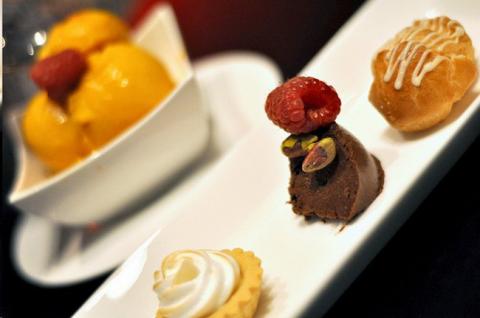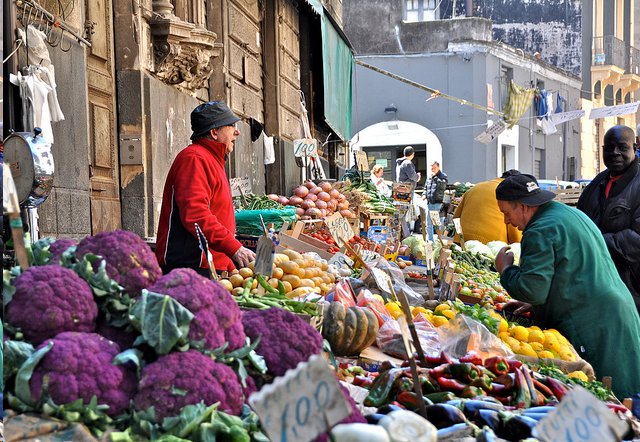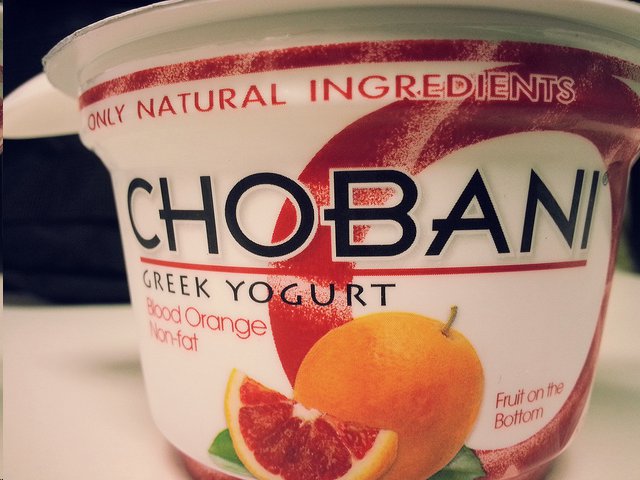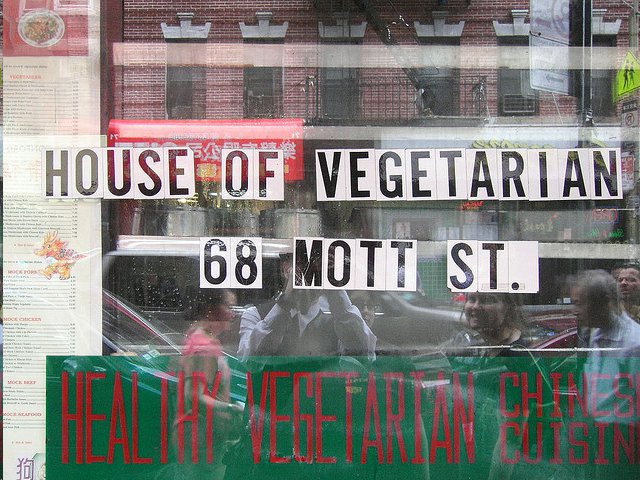Debunking Labels: Does What We Eat Define Who We Are?

Ever since a 60 Minutes report in 1991 focused on ‘the French Paradox,’ it has become a phenomenon amongst Americans. How is it that the French consume cheese, butter, pastries and red wine regularly with no nationwide influx in cholesterol levels, cardiovascular disease, or obesity? In David Lebovitz’s book, The Sweet Life in Paris, he remarks that an overweight French doctor told him Americans are just fat by birthright. Irony seems to be the theme here.
It is certainly a difference of culture between France and America, including pace of eating meals and amounts of food consumed. The red wine helps the heart and body, too.
America has become a nation divided, one refrigerator at a time, as we have been bombarded with non-dairy options. Aside from the classic blue and red-capped milk jugs and white cartons, you might find soymilk, almond milk, coconut milk, rice milk and something labeled “nondairy beverage.” Don’t forget the vanilla and chocolate-flavored options. Next to that you might see yogurt: low-fat, nonfat, Greek, probiotic, soy, and almond.
With such an array of options, how can we decide what’s best for our bodies? Let’s start by deciphering the diet labels that constantly creep into conversations about eating.
Vegan, Vegetarian, Pescatarian and Other Labels
With a constant flurry of labels being tossed around, it’s easy to get confused about who eats what, and what it all means.
Vegans avoid all animal products, excluding not just animal ingredients in food, but also clothing, beauty products, and anything made from animal byproducts. Most vegetarians eat eggs and dairy, but avoid eating beef, pork, poultry, fish, seafood or any kind of animal flesh. Some people identify this type of vegetarian as lacto-ovo-vegetarian. Pescatarians avoid all meat and poultry, but are okay with eating fish. “Flexitarian” is a more recent term for people who eat mostly vegetarian, but enjoy meat once in a while.
A raw food diet exclusively deals with unprocessed vegan foods not heated above 115 degrees Fahrenheit. A macrobiotic diet includes unprocessed vegan foods, emphasizing whole grains, fruits and vegetables, especially sea vegetables like seaweed. In this diet, fish is eaten sparingly and all refined oils and sugars are avoided.
Of course, there are more labels, and new versions popping up often. According to a Harris Interactive national survey, 2.5 percent of the U.S. population is vegan. That’s 7.5 million U.S. citizens eating no animal products, a number double what it was in 2009. Five percent, or 16 million people, live a vegetarian lifestyle.
Gray Matter
Just like religion, there are varying degrees of each label.
“I am a vegan. I just haven’t gotten rid of all my leather yet,” Josie Lazo said. “I don’t like to use the word strict. I’m completely vegan dietarily.”
Lazo lives in San Francisco, where she works as an assistant product stylist for Gap.
“The fashionista in me conflicts with the vegan in me. I have a hard time letting go of the shoes,” Lazo said.
Most of her friends are not vegan, but she is meeting others through a yoga teacher training and is active on Facebook, where she posts articles and information about veganism.
“I don’t like to see my friends consuming dead animal products,” she said. “I know they’re good people; they’re just misinformed about what’s going on. I have friends on Facebook that have said thanks for posting that stuff because it truly helps change my viewpoint and my diet. A couple people said they’ve turned vegan because of me. I wish I could wave a magic wand [that] would turn them all vegan.”

The Lifestyle of a Vegan
Noel Polanco is known as “Vegan Fitness Model.” He has passionately adhered to a vegan diet for four years, and living in Manhattan makes it easy, he said.
“You can find vegan cheese, non-dairy milks and loads of other vegan stuff. I feel like you can't miss anything. Knowing that I am consuming cruelty-free food makes me at peace with my heart and mind,” he said.
Polanco comes from a Dominican background, where the diet traditionally includes lots of meat, he said.
“I noticed how all my family members and people around me would get overweight and end up with heart diseases, diabetes, etc. Seeing this motivated me to go vegan and eat whole plant-based food.”
Does a Diet Label Equal Good Health?
Tera Naset is a registered dietitian and nutritionist at Rush Health Systems in Chicago.
“I spend a lot of my job mythbusting, and one of them would be [that] vegan is automatically healthy. Nothing is automatically healthier. It’ll go away. It’s a fad,” she said.
Naset doesn’t see a lot of patients who are trying to become vegan because it’s “very prohibitive,” she said.

“I worry with veganism, especially about the soy intake, and that’s the main ingredient in most of the meat and cheese substitutes,” she said.
Many vegan products are heavily processed in order to taste like “the real thing.” It’s very important to read the ingredient list on products, she said.
“If you can’t go through the store and buy each and every one of those ingredients in the store, don’t buy that product.”
Naset advises sticking to foods that occur naturally in the diet.
“Skip the fake anythings that are trying to be like something else!”

Soy - Oh Boy
Combined with moderate exercise, what we eat can greatly affect our physical and mental health. As kids, many Americans were taught to drink milk for healthy bones, but now multiple options face us to determine what’s best for not just our bones, but our skin, hair, organs and overall health. Studies show that avoiding dairy has a good chance to make you feel better and improve your skin, hair, and nails and even prevent Parkinson’s disease.
Soy became a hugely popular product in the past 20 years, and is often a major part of a vegan diet. But this dairy alternative has recently been linked to brain damage, breast cancer and malnutrition, among other things. Unfemented soy is where the trouble lies, and is what constitutes popular products like soy milk and soy cheese.
More Trends
Gluten-free and juicing are two other trends. Gluten-free is a label that confuses people, Naset said, pointing out that gluten is a protein found in certain foods like wheat, barley and rye. A gluten-free diet does not equal a low-carb diet, she said.
In addition, companies have turned to labeling products “gluten-free” in order to make them appear healthier. It’s another buzz word placed on products to attract customers who are trying to be healthy.
Juicing does not mean drinking more Tropicana. More and more people are buying juicers and using fresh vegetables, fruits, seeds and other ingredients to create their own wholesome concoctions. Anyone interested in doing a “juice cleanse” should talk to a healthcare professional before attempting it on their own, as there isn’t a lot of research yet to prove its results, and it isn’t safe for some people.
Soaring Into the Future
Abraham Lincoln is rumored to have been a vegan, though he may not have labeled himself as such.
Babycakes Cupcakes, a New York City bakery which serves all vegan and gluten-free products, opened an outpost at Walt Disney World in Orlando, Florida three years ago.
“Disney’s very big on trying to cater to people with food allergies,” manager Emily Ann Woesthoff said. “I think they wanted a healthier option [and] food allergy friendly bakery in the Downtown Disney area.”
The staff at Disney’s Babycakes has gone back and forth with labeling their products “vegan,” she said.
“It’s hard to label something as vegan. You get people who just don’t know what it is.”
The good news is that this plethora of options, not just in daily life, but even on Disney vacations, allows us the opportunity to figure out what suits our own specific needs and tastes. It gives us a chance to expand our palate, even if we don’t fit comfortably under one specific label.
Author Bio:
Beth Kaiserman is a contributing writer at Highbrow Magazine.
Photos: Vancity Allie (Flickr); Darkroom Daze (Flickr); fbiley (Flickr); Striatic (Flickr).































































































































































































































































































































